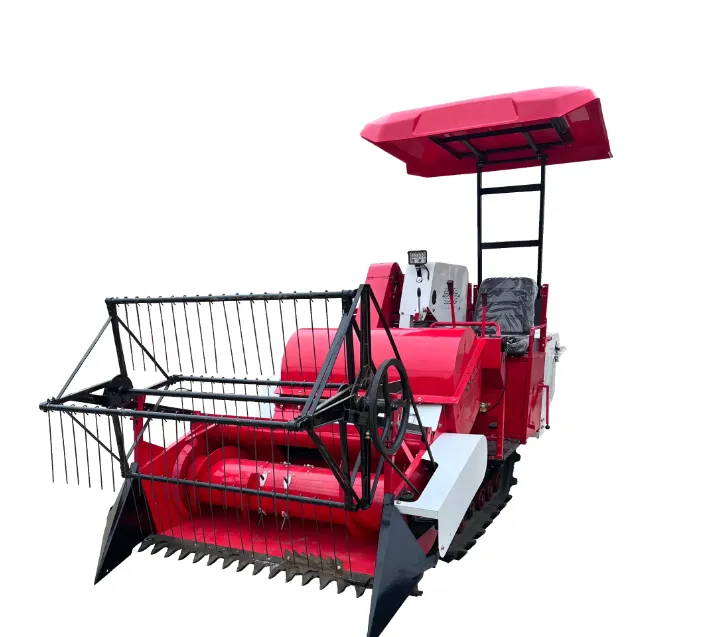
Wheat Reaper: Pioneer and Efficiency Enhancement of Agricultural Mechanization
Wheat reaper, As an important invention in the process of agricultural mechanization, it has had a profound impact on the improvement of agricultural production efficiency and even the overall development of agriculture. Its appearance marks the liberation of humanity from the long-term reliance on heavy manual harvesting, laying a solid foundation for the leap of agricultural productivity.

In traditional agricultural production, when Reaper mainly relies on manpower, which is time-consuming, labor-intensive, and inefficient
One of the biggest challenges facing large-scale planting is how to complete harvesting in a timely manner and avoid food losses caused by weather changes. The emergence of the wheat harvester completely changed this situation. It utilizes mechanical power to automate a series of processes such as harvesting, threshing, and even straw processing, significantly reducing harvesting time and labor costs. The harvesting work that used to take days or even weeks to complete can now be done in just a few hours, greatly improving agricultural production efficiency and reducing the risk of food loss.
The popularization of 'when Reaper' has also promoted the development of large-scale agricultural operations
In the era of manual harvesting, limited by labor costs and efficiency, agricultural production is often dominated by small-scale operations. The use of Reaper for Wheat enables large-scale planting, reduces production costs per unit area, and improves the overall efficiency of agriculture. Farmers can focus more on field management, variety improvement, and other aspects to further enhance the level of agricultural production.
In addition to directly improving production efficiency, when Reaper also indirectly promotes the advancement of agricultural technology
In order to meet the needs of mechanized harvesting, breeders have begun to cultivate wheat seeds that are easier to harvest mechanically, such as varieties with neat plant shapes and strong lodging resistance. At the same time, in order to fully utilize the efficiency of the wheat harvester machine, farmland planning also pays more attention to the smoothness and construction of field roads, in order to facilitate the passage and operation of machinery.
We should also see that the popularity of when Reaper has brought some challenges
For example, the skill requirements for farmers have increased, requiring knowledge in mechanical operation, maintenance, and repair; Meanwhile, mechanized operations may also lead to soil compaction, affecting soil structure and requiring corresponding measures for improvement.
In summary, the wheat combine harvester, as an important component of agricultural mechanization, has played a significant role in improving agricultural production efficiency, promoting large-scale agricultural operations, and advancing agricultural technology. It is not only a symbol of agricultural productivity improvement, but also an important symbol of agricultural modernization. In the future, with the continuous development of technology, when Reaper will move towards a more intelligent, efficient, and environmentally friendly direction, contributing greater strength to the sustainable development of agriculture.
Wheat Reaper FAQs
What is Wheat Reaper
Wheat Reaper is an agricultural machinery specifically designed for harvesting wheat. It can efficiently complete the cutting, threshing, and collection of wheat, and is widely used in wheat planting areas.
What are the main functions of Wheat Reaper
Harvesting wheat: Quickly cut the stems of wheat.
Threshing: Separating wheat grains from straw.
Cleaning: Remove impurities (such as straw, dust, etc.) through fans and screens.
Collection and storage: Transport the cleaned wheat to storage warehouses or transport vehicles.
What is the working principle of Wheat Reaper
- Cutting: Cut the wheat with a cutter.
- Conveying: Convey the cut wheat to the threshing device.
- Threshing: Separate wheat grains from straw through a drum and concave plate.
- Cleaning: Use a fan and sieve to remove impurities.
- Collection: Transport the cleaned wheat to a storage bin or transport vehicle.
What are the advantages of using Wheat Reaper
Efficient homework: significantly improves wheat harvesting efficiency, saving manpower and time.
Reduce losses: Reduce the losses of wheat during harvesting and threshing processes.
Improving quality: The cleaned wheat has fewer impurities and higher quality.
Strong adaptability: Suitable for wheat planting areas of different terrains and scales.
How to maintain and upkeep Wheat Reaper
Regular inspection: Check the wear of vulnerable parts such as blades, chains, belts, etc.
Cleaning the machine: Remove wheat residue and dust from the machine.
Lubricating components: Regularly lubricate moving parts to reduce wear.
Check the oil: Ensure that the engine oil, hydraulic oil, etc. are at normal levels.
Storage protection: During non use seasons, store the machine in a dry, ventilated place and take rust prevention measures.
Latest news
-
Mini Combine Harvester for Paddy – Compact, Efficient Rice Harvesting SolutionsNewsNov.24,2025
-
Mini Chain Harvester: Compact Forestry Solutions for Sustainable LoggingNewsNov.23,2025
-
Kartar Mini Harvester – Compact, Efficient Harvesting Machinery for Small FarmsNewsNov.23,2025
-
Compact Power: Elevate Your Farming with Harvesting Machine SmallNewsNov.22,2025
-
Discover the Power and Potential of Harvester Mini Combine Machines | Efficient Small-Scale HarvestingNewsNov.22,2025
-
Compact Harvester Machines: Small-Scale Agriculture’s Big AdvantageNewsNov.21,2025







